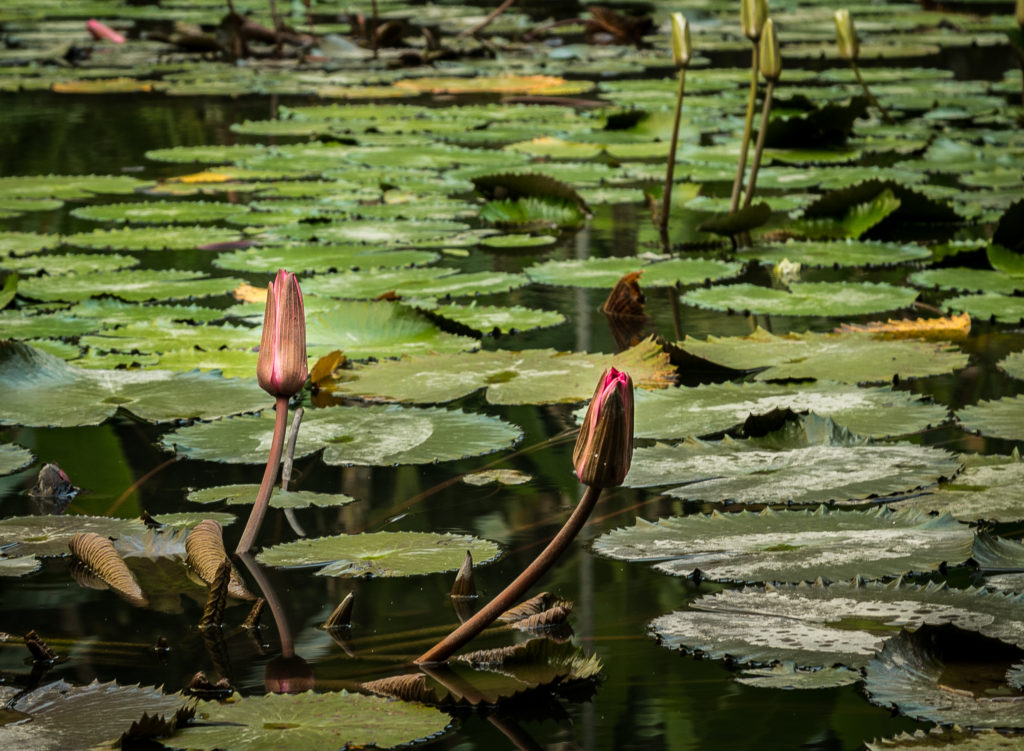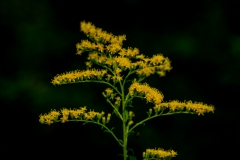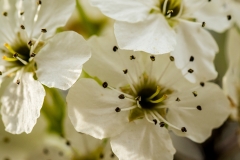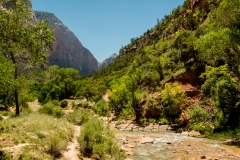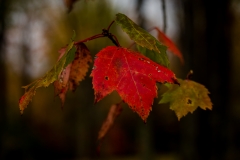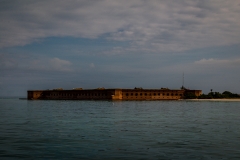Bali is known for its culture, temples, and people. If you had been to Bali, then you would have realized there are probably more temples than homes on this island. Most of the temples are actually shrines. These Balinese temples are normally peaceful and desolate. They transform into scenes of great activity during festivals or temple anniversaries. Traditional dance performances, cockfighting, and even gambling often take place during such events. You’ll find that each of Bali’s temples is unique. They may either face towards the mountains, the sea or towards sunrise.
Temples in Bali are referred to as “Pura” and is originated from the Sanskrit word – Puram which means “city”/ “palace”. There are many temples in Bali, that it is referred to as “The Island of a Thousand Puras”.
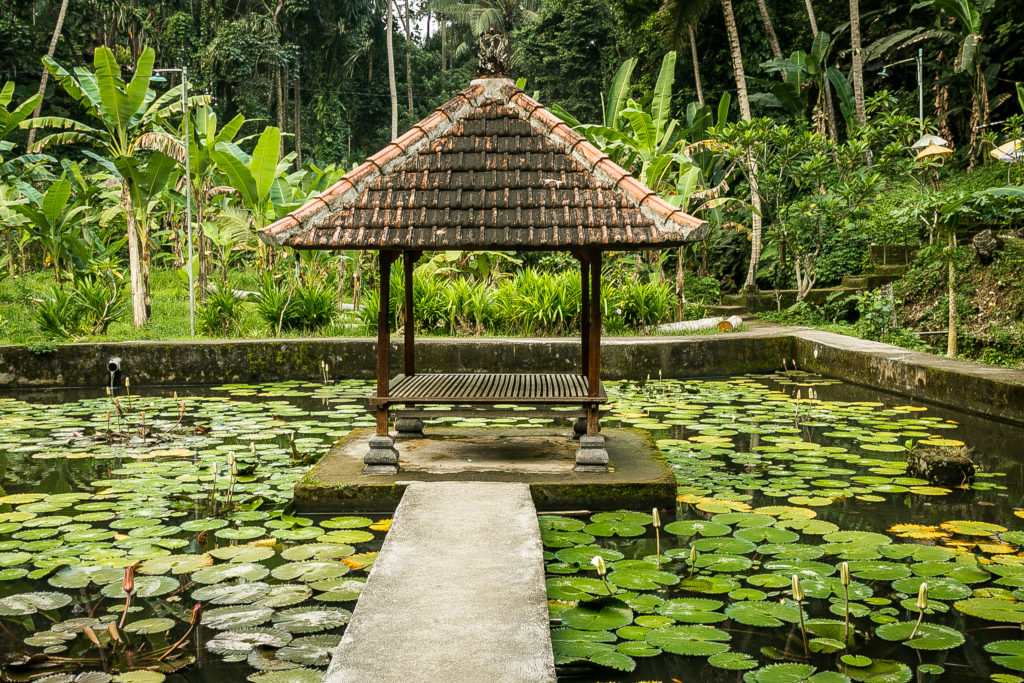
Unlike the temples in India, puras are designed as an open-air place of worship within enclosed walls, connected with a series of intricately decorated gates between its compounds. These walled compounds contain several shrines, meru (towers), and bale (pavilions). The design, plan, and layout of the Pura follows the trimandala concept of Balinese space allocation.
As it might not be possible to visit every temple in Bali during vacation, there are few which you should not miss during your visit to Bali. I and my brother analyzed and finally settled down on the below list of temples. And we did visit them during our stay in Bali except the one – Ulu Danu Beratan Temple
- Tanah Lot Temple
- Pura Luhur Uluwatu
- Pura Besakih
- Goa Gajah
- Pura Lempuyang Luhur
- Ulu Danu Beratan Temple
Pura Besakih Temple:
Besakih temple is referred to as “Mother Temple” by Balinese people for over 1000 years. The temple is located on the southwestern slopes of Mt. Agung. On a clear sunny day, one can see the majestic Mount Agung at the rear side of the temple. Besakih is an artistic and unique complex that comprises at least 86 temples which include the main Pura Penataran Agung (the Great Temple of State) and 18 others. Besakih is considered to be the biggest and holiest of the island’s temples.
The temple is surrounded by breathtaking views of the countryside, rice terraces, mountains, and streams. It is the only temple open to every devotee from any caste groups and is often crowded with people during ceremonies.
We visited the temple on the day of ceremony and the entire temple was crowded with people offering their prayers to their deities in the temple. Guides are available at the temple but then I suggest you avoid them as they expect $$$ from you for taking around which you can explore on your own. Visitors can offer prayers to the Gods in the temple but they are not allowed inside the shrine.
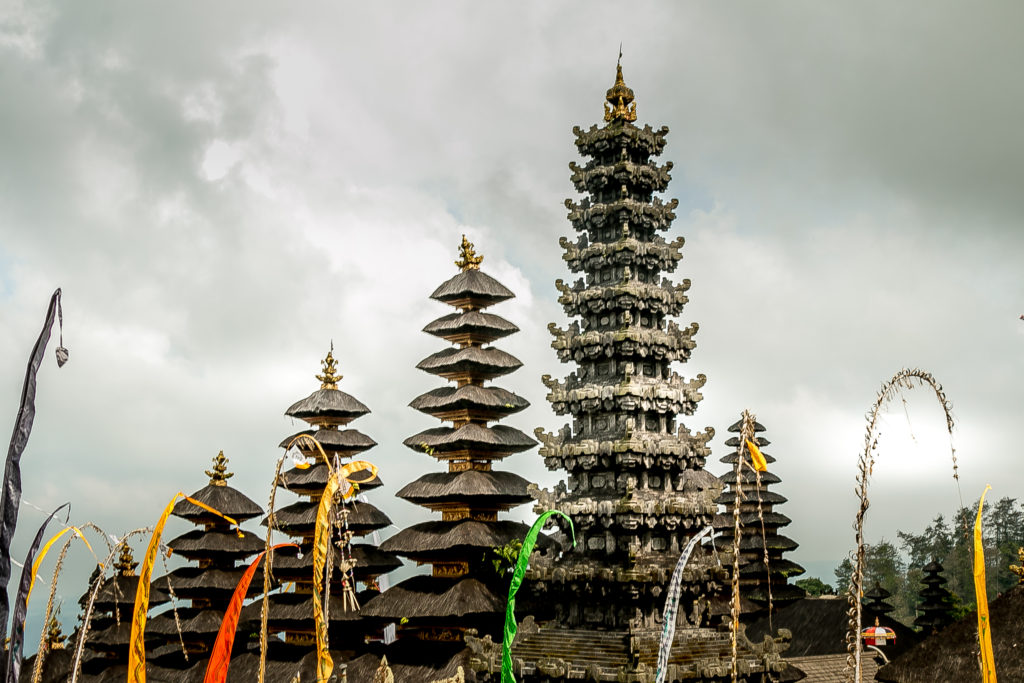
Pura Besakih Temple
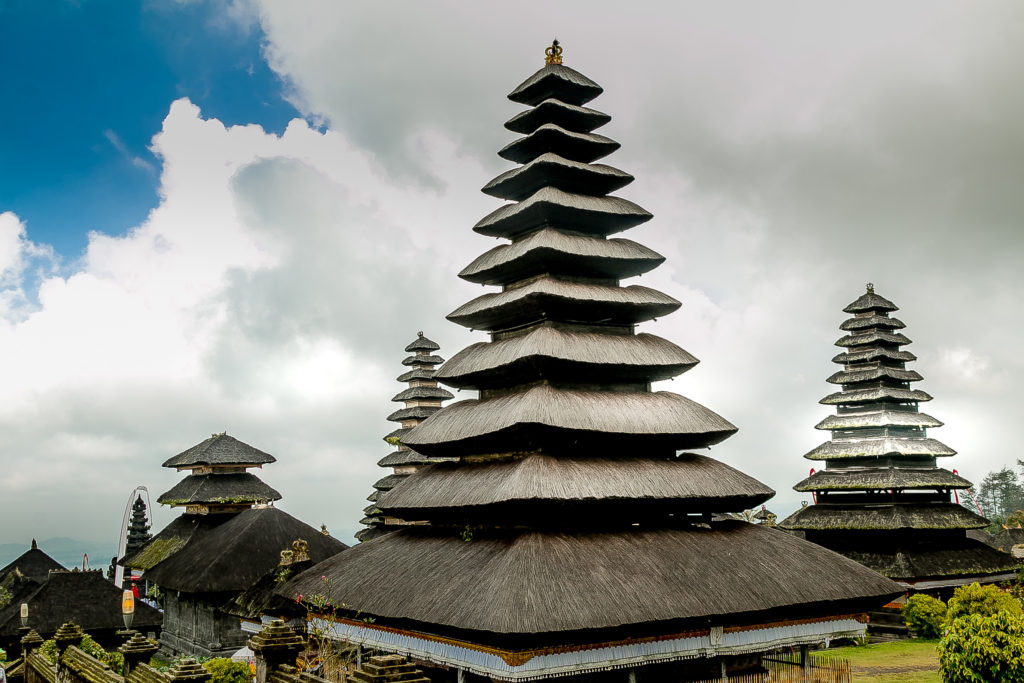
Pura Besakih Temple
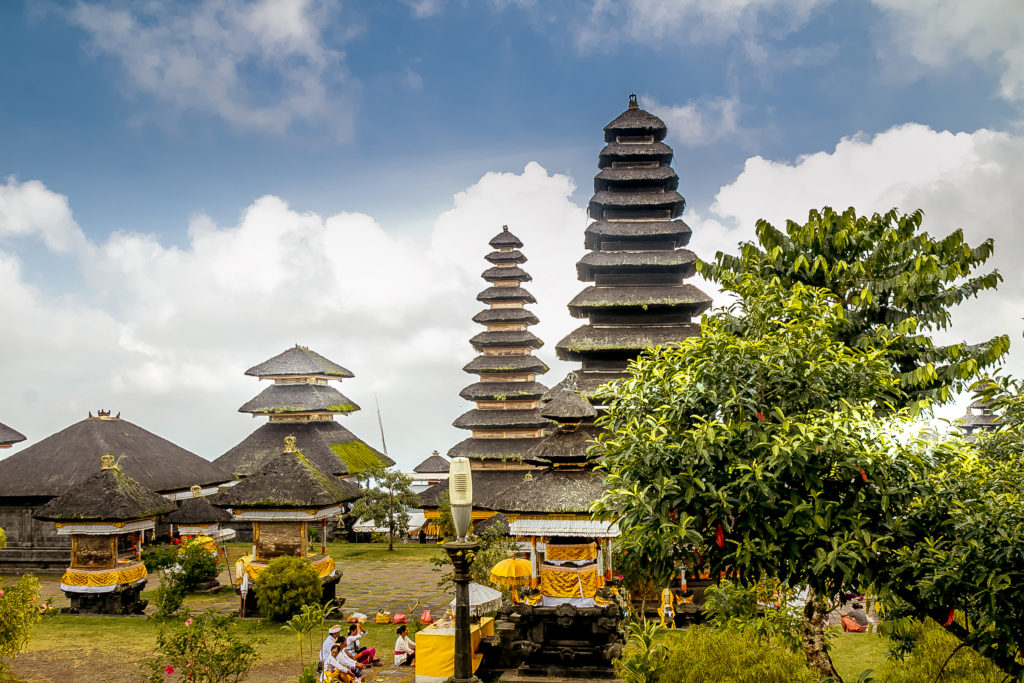
Pura Besakih – Mother Temple
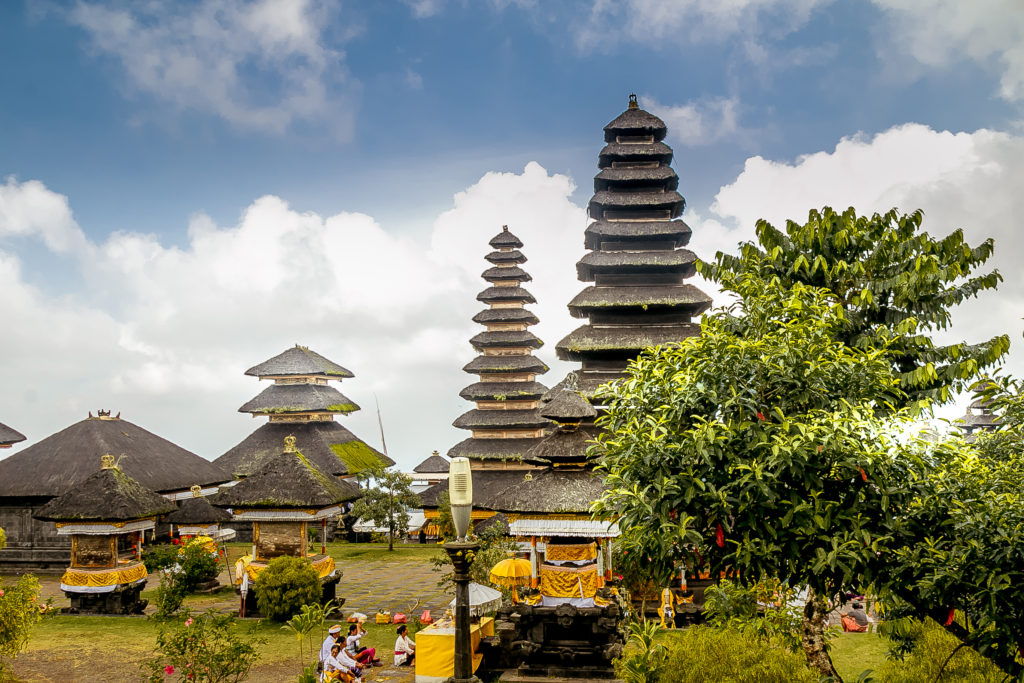
Pura Besakih
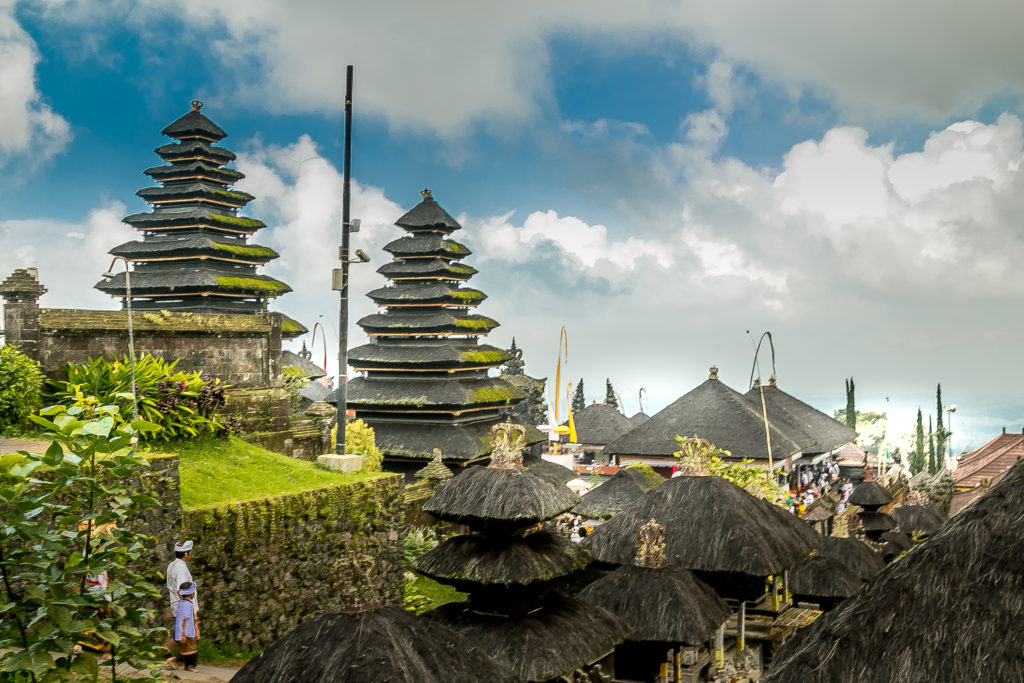
Pura Besakih
Goa Gajah Temple:
Goa Gajah or Elephant Cave is an archaeological site in Bedulu village, 6 Km from central Ubud. The temple is small comparative to Pura Besakih but then one needs more than an hour to explore the relic-filled courtyard and view the rock-wall carvings. The temple has a meditational cave, fountains and bathing pools.
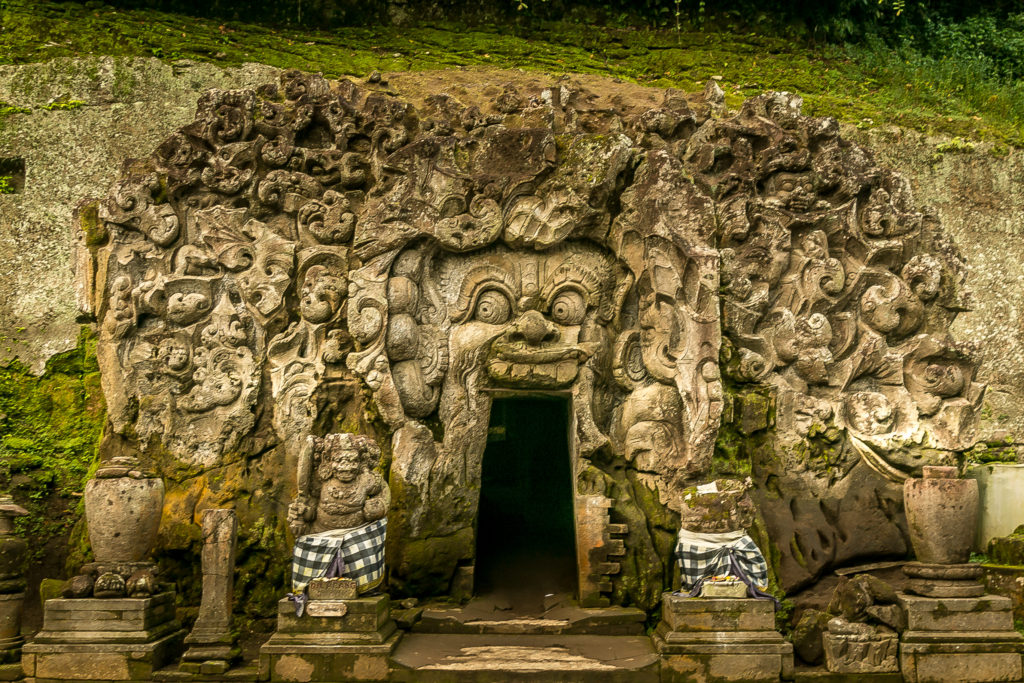
Elephant Cave – Goa Gajah Temple
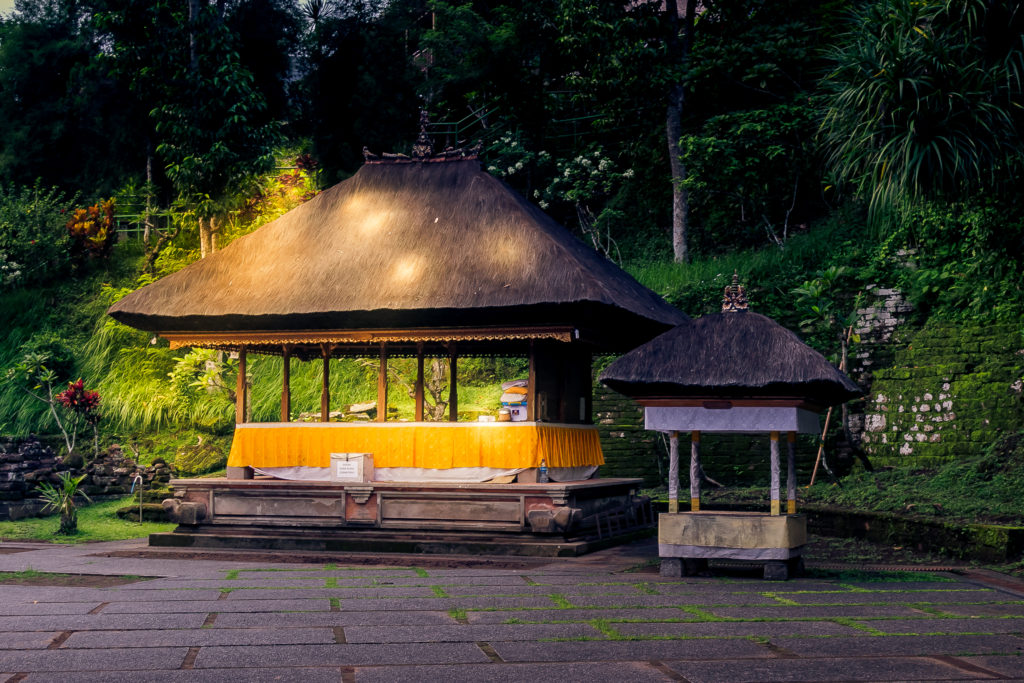
Goa Gajah Temple
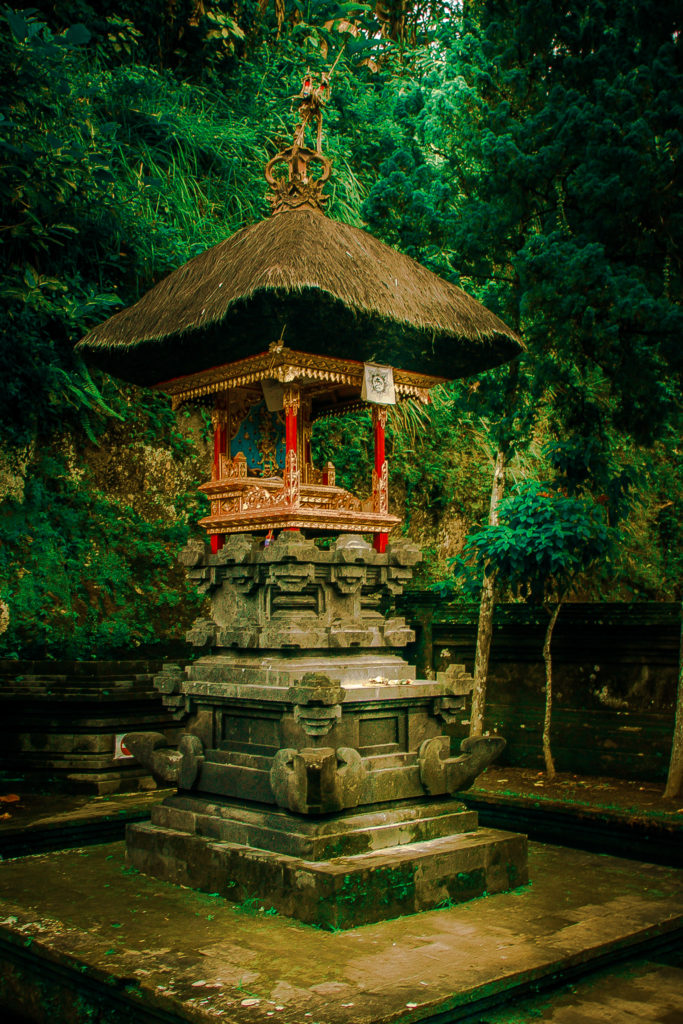
Goa Gajah Temple
Pura Luhur Uluwatu:
The temple is known for its location situated on top of a steep cliff which is approximately 70 meters above sea temple. This is one of the 6 key spiritual pillars in Bali and it offers a splendid sunset as Tanah Lot temple.
Pura Luhur Uluwatu is definitely one of the top places on the island to go to for a delightful sunset, with direct views overlooking the beautiful waves of the Indian Ocean and daily Kecak dance performances held at an amphitheater nearby. Balinese architecture, traditionally-designed gateways, and ancient sculptures add to Uluwatu Temple’s appeal. We visited the temple around sunset and also watched the ancient Balinese dance – Kecak.
The Balinese Hindus believe that the powers of the Hindu Trinity: Brahma, Vishnu, and Siva, merge here. That belief results in making Uluwatu Temple a place of worship of Siva Rudra, the Balinese Hindu deity of all elements and aspects of life in the universe. Pura Uluwatu is also dedicated to protecting Bali from evil sea spirits.
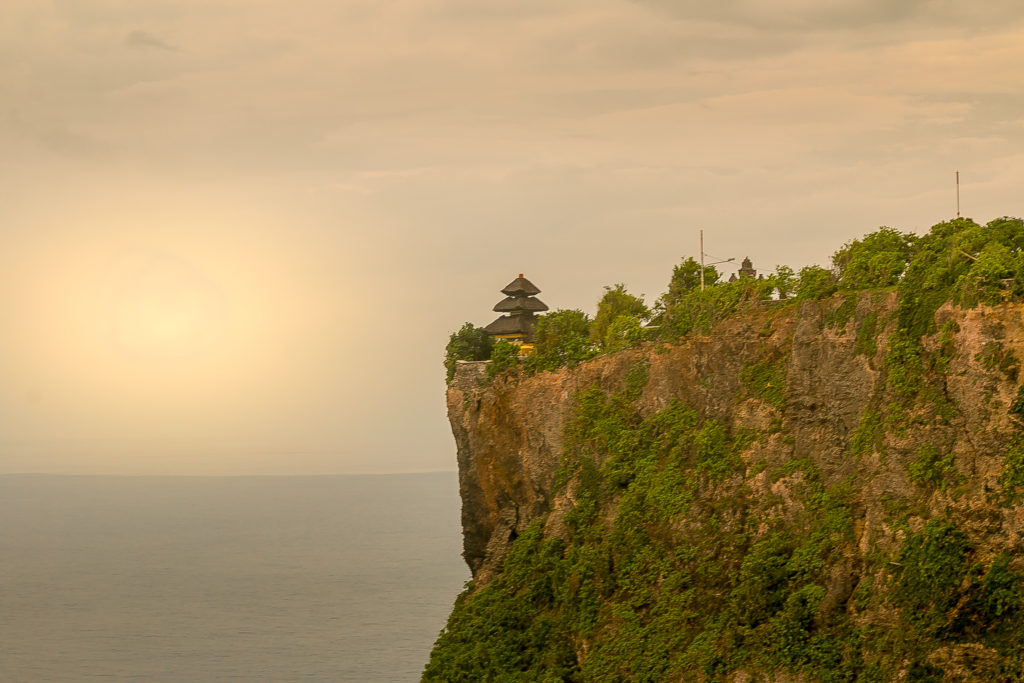
Pura Uluwatu
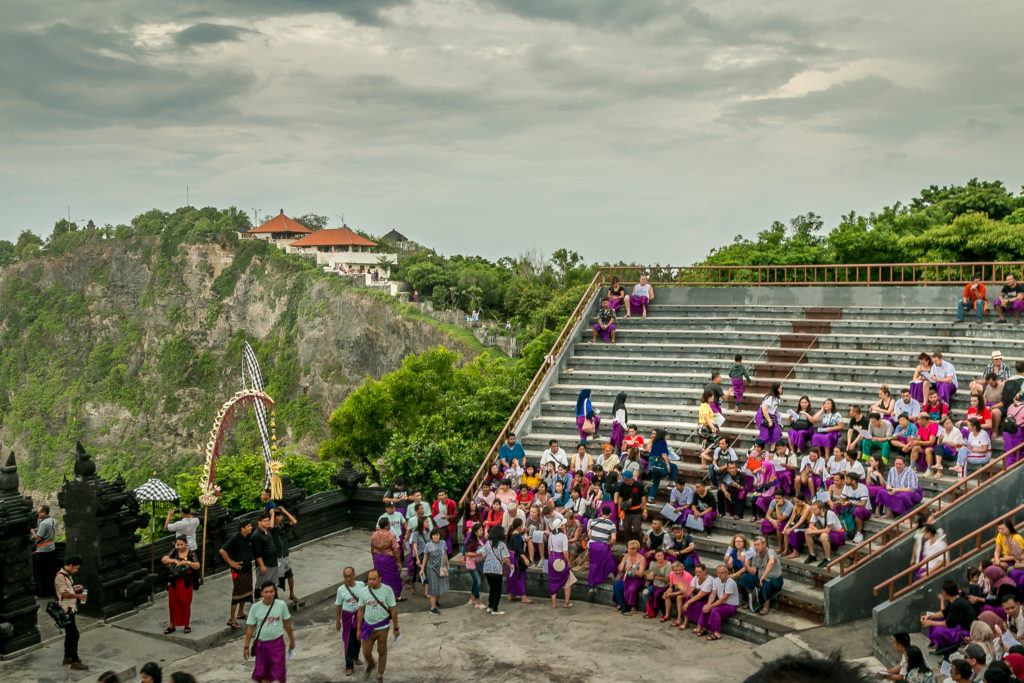
Pura Uluwatu
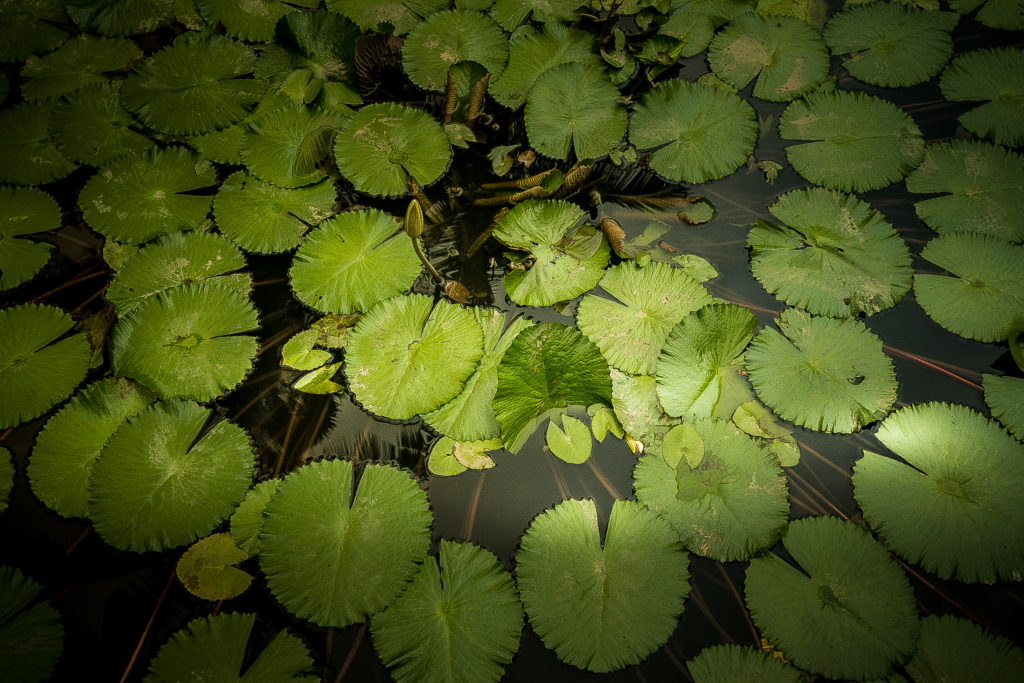
Goa Gajah Temple – LOtus Pond
Pura Lempuyang Luhur:
Lempuyang Temple or Pura Lempuyang Luhur is one of Bali’s oldest and most venerated temples, on par with Besakih (the ‘mother temple’ of Bali). The temple is also believed to predate the majority of Hindu temples on the island. The main temple lies at 1,175m above sea level, on the peak of the namesake Mount Lempuyang in East Bali.
One has to climb a steep staircase of over 1,700 steps and it has several other temples along its way to the main temple. The temple is one of the famous Instagram spot and usually there will be a lengthy queue to click pictures.
We were completely drained out when we visited this temple. Hence we visited the first temple on the way to the main temple and returned back as the path was very steep and the day was so exhaustingly hot.
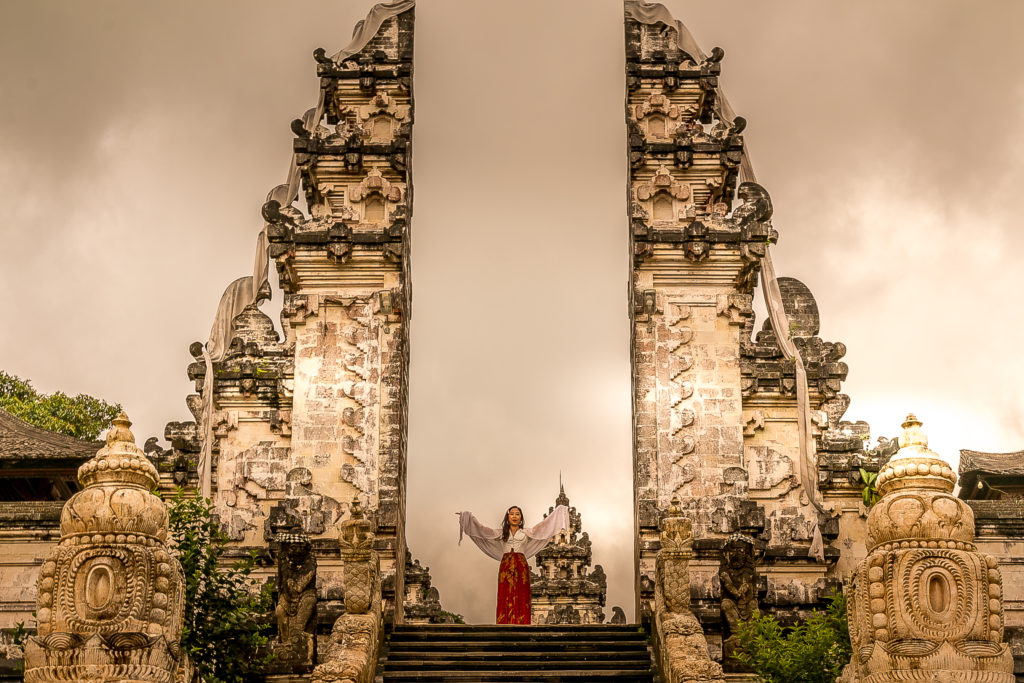
Pura Lempuyank
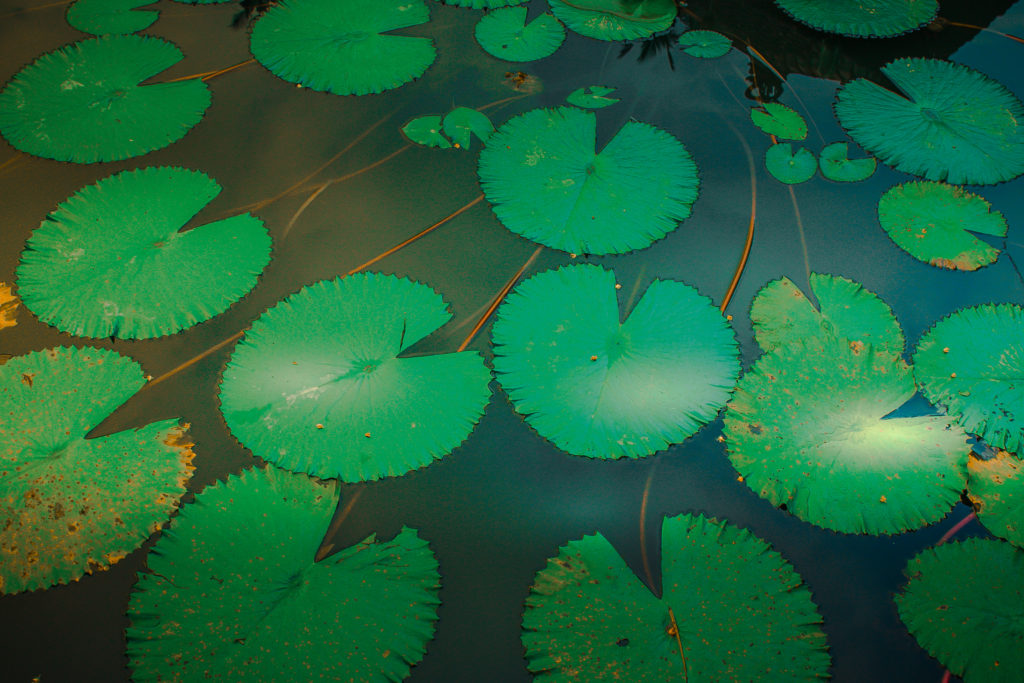
Goa Gajah Temple
Tanah Lot Temple
Tanah Lot temple is one of my favorite temples for its majestic and artistic location. This is the most famous landmarks and a must include in your itinerary. It is known for its unique location and mesmerizing sunset.
Tanah Lot is a sea temple located in the Beraban village of the Tabanan regency, an approximate 20km northwest of Kuta.
Visitors cannot enter the main temple grounds of Tanah but then it offers beautiful panoramic views of the temple and its surrounding sea. At high tide, waves flood the causeways making it impossible to cross. At low tide, you may cross to view the base where the legendary ‘guardian’ sea snakes dwell in crevices around the Tirta Pabersihan fountain. This natural spout is the source of holy water for all temples in the area. Priests at the fountain bless visitors by sprinkling them with the water. You can cup your palms and take a sip to prove it is amazingly freshwater.
Watch out for the Monkeys!
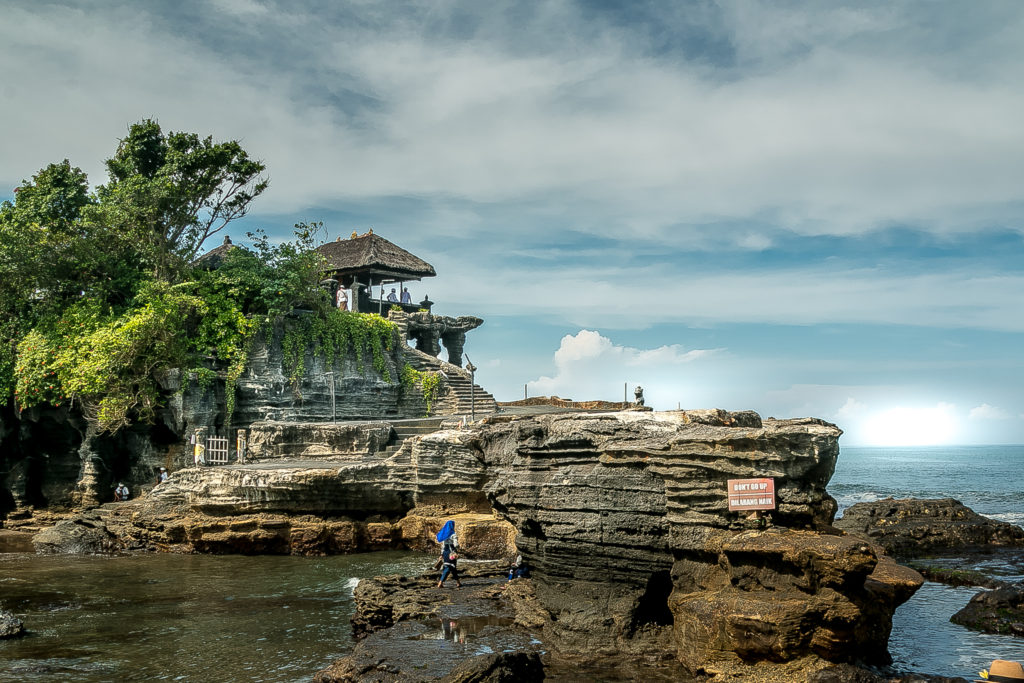
Tanah Lot Temple
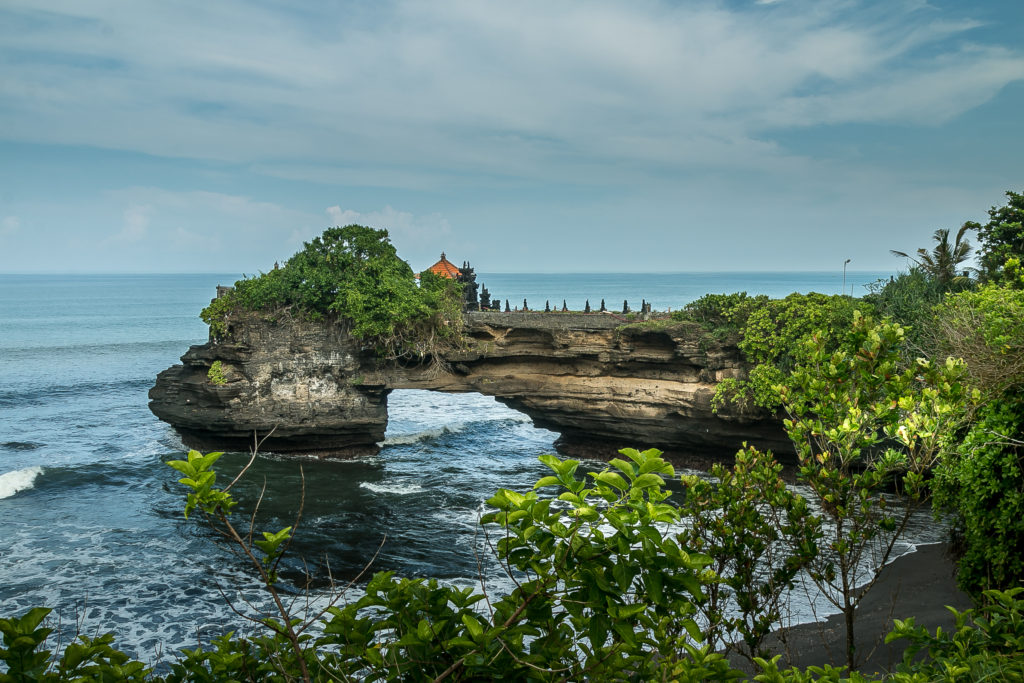
Tanah Lot Temple
FAST FACTS:
- All temples have entrance fees and they accept only cash
- Women during periods are not allowed to enter into the temples
- Wearing a sarong and waist sash is compulsory. They are available for rent at the entrance
- Watch out for the resident macaques in the Uluwatu temple. They do grab sunglasses and cameras.
- The traditional Kecak dance is performed every day at the adjacent cliff-top stage of Uluwatu temple from 6 pm and usually last an hour
- There’s no public transportation to get to Uluwatu temple and going back into town will be difficult without any prearranged ride or taxi
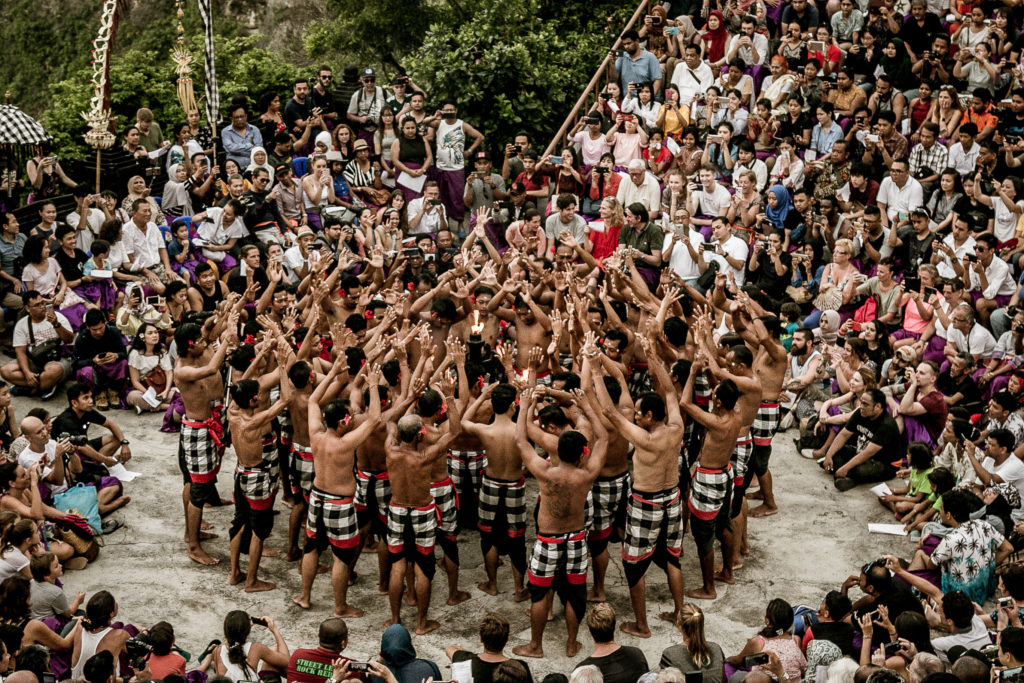
Kecak Dance
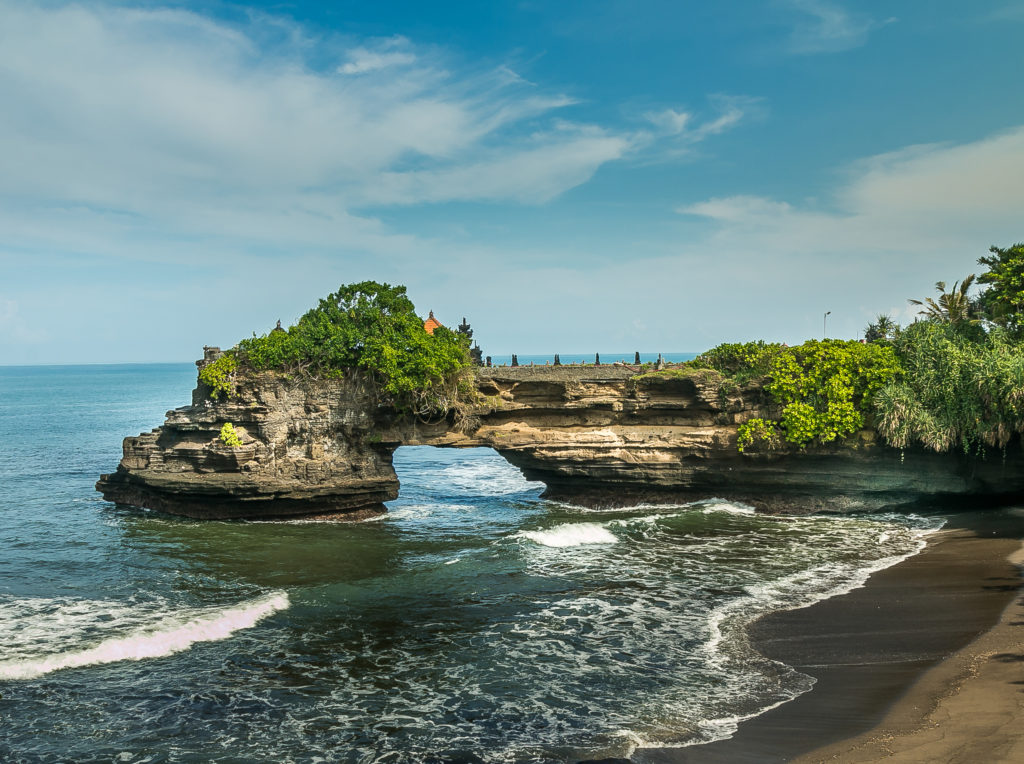
Tanah Lot Temple
My Recommendations:
- Buy a Sarong and waist stash so that you don’t want to rent at every temple
- Carry Rupiah as temples only accept cash
- Beware of the guides who are expensive
- Visit Pura Besakih, Goa Gajah and Lempuyang temple in the early mornings. The crowd is usually less in the mornings.
- Visit Uluwatu temple for sunset and don’t miss out the Kecak performance. The stage gets usually crowded around sunset. Hence be early to reserve your spot
- Visit Tanah lot temple around sunset for capturing beautiful panoramic views. Watch out for the waves. Ensure caution near the large rocks. Do not try to cross during high tides
- Watch out for monkeys and ensure that you always stand at a distance from the fence/wall while clicking pictures
- Do not step on the offerings in the temple grounds.
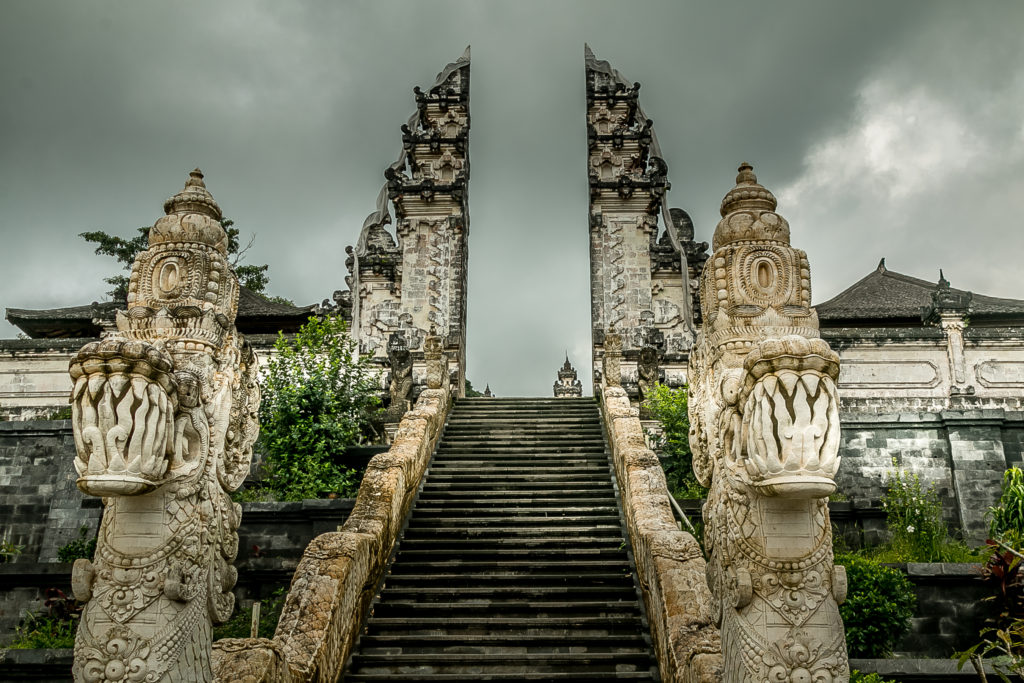
Pura Lempuyank
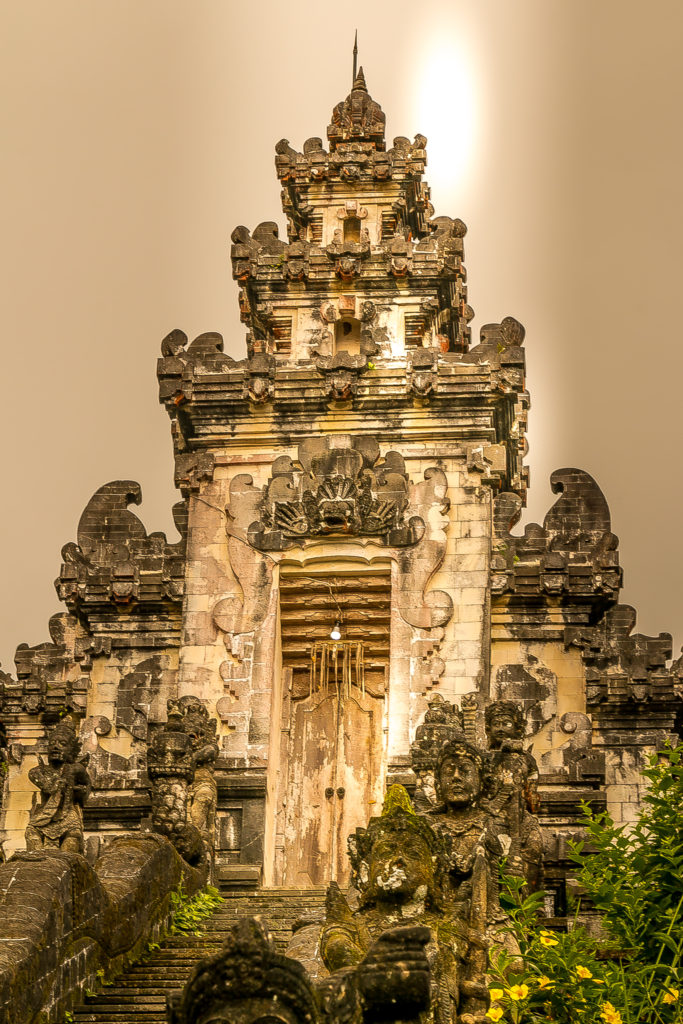
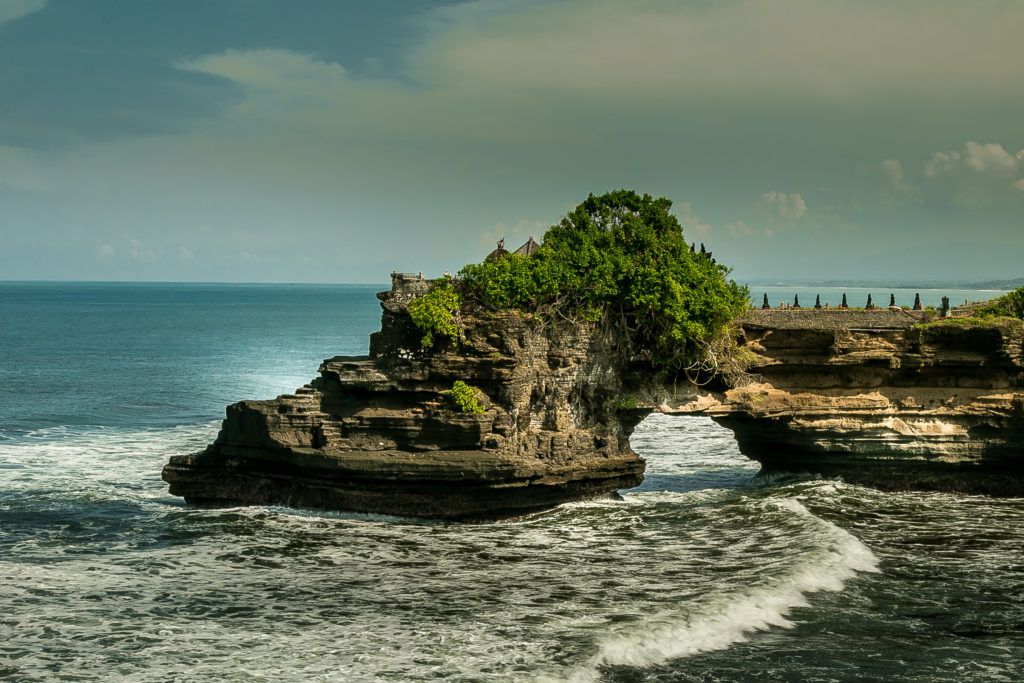
Tanah Lot Temple
If you like my travelogue and wish to follow my travel stories further, then do like and follow my profile here – Facebook, Google, Instagram
Thanks, Karthi

